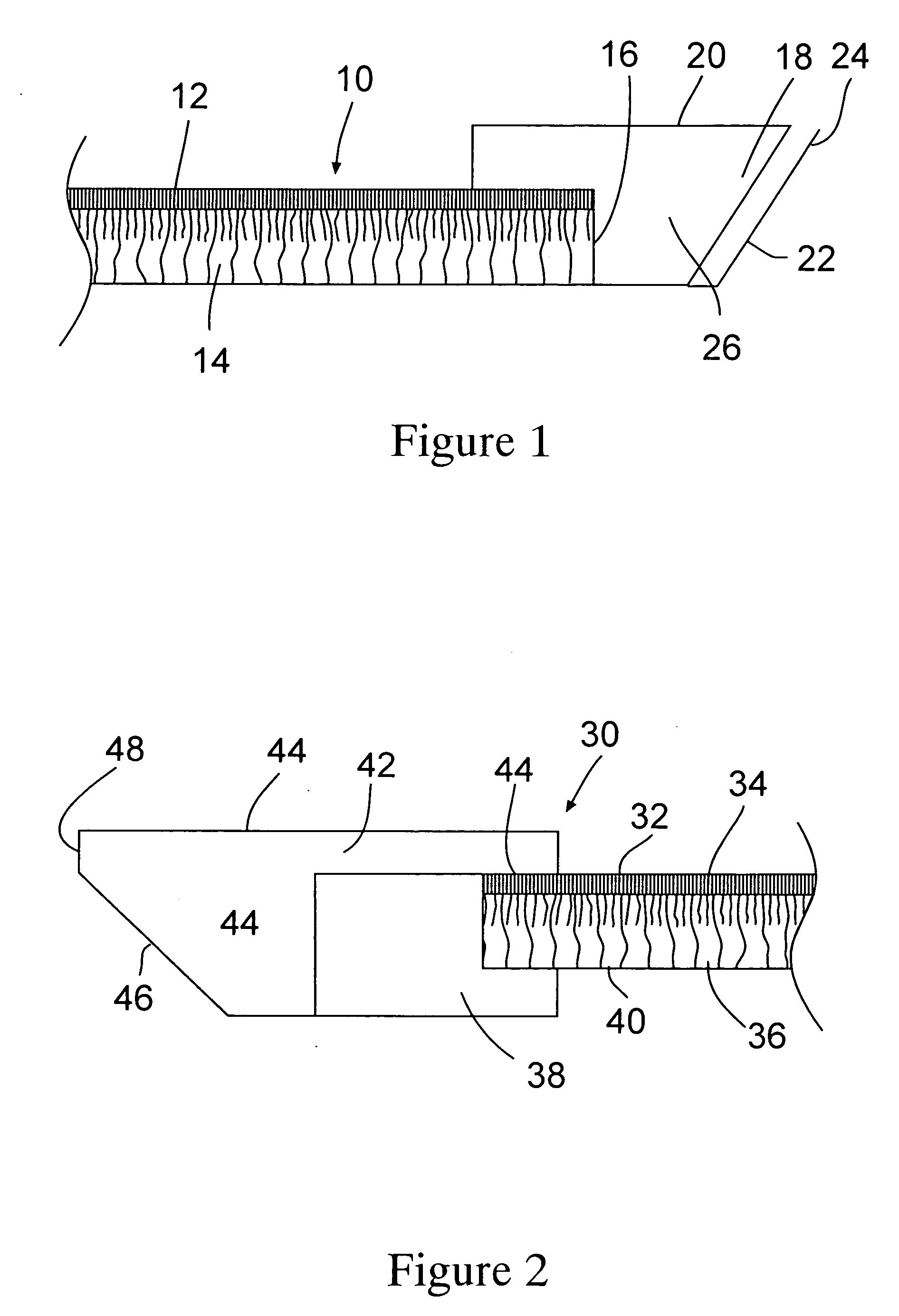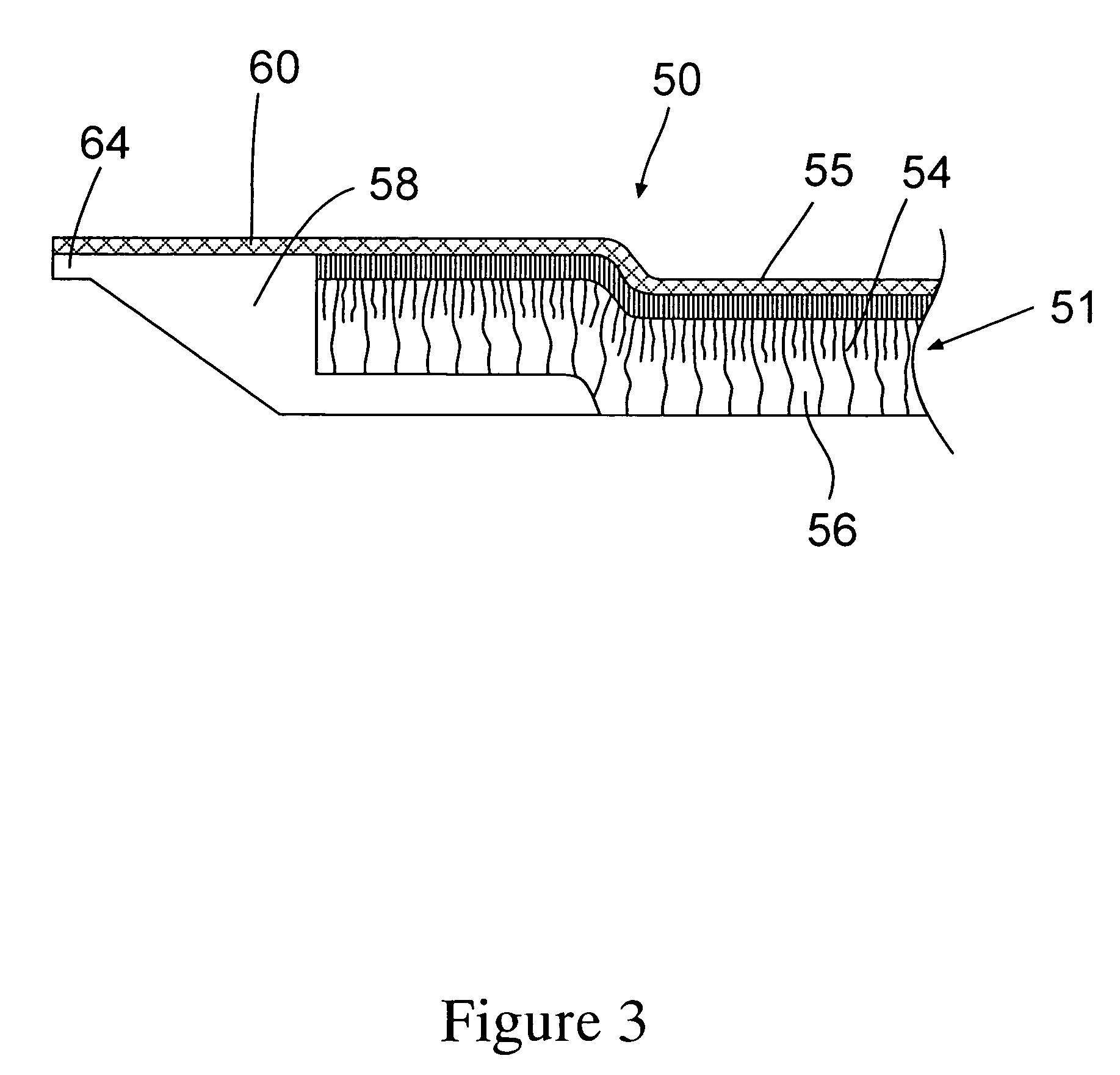Filtration module
- Summary
- Abstract
- Description
- Claims
- Application Information
AI Technical Summary
Benefits of technology
Problems solved by technology
Method used
Image
Examples
Embodiment Construction
[0029] The present invention utilizes filtration membrane elements that can be selectively sealed in a stacked configuration to effect separation of filtrate from feed or feed and retentate. The filtration membrane element comprise a membrane layer having one edge thereof bonded to a thermoplastic polymeric composition. Preferably, the bonded thermoplastic polymeric composition has a top surface and a bottom surface configured so that they converge toward each other and form an end or tip area. The end or tip area is configured so that it absorbs radiant heat energy or a non-heat energy such as ultrasonic energy which is absorbed by the end and converted to heat energy. When exposed to such energy, the end or tip preferentially melts prior to the main body of the thermoplastic polymeric composition. This feature permits control of the direction that the molten thermoplastic polymeric composition flows that, in turn, permits controlling selective areas of a filtration apparatus to be...
PUM
| Property | Measurement | Unit |
|---|---|---|
| Time | aaaaa | aaaaa |
| Time | aaaaa | aaaaa |
| Mass | aaaaa | aaaaa |
Abstract
Description
Claims
Application Information
 Login to View More
Login to View More - R&D
- Intellectual Property
- Life Sciences
- Materials
- Tech Scout
- Unparalleled Data Quality
- Higher Quality Content
- 60% Fewer Hallucinations
Browse by: Latest US Patents, China's latest patents, Technical Efficacy Thesaurus, Application Domain, Technology Topic, Popular Technical Reports.
© 2025 PatSnap. All rights reserved.Legal|Privacy policy|Modern Slavery Act Transparency Statement|Sitemap|About US| Contact US: help@patsnap.com



